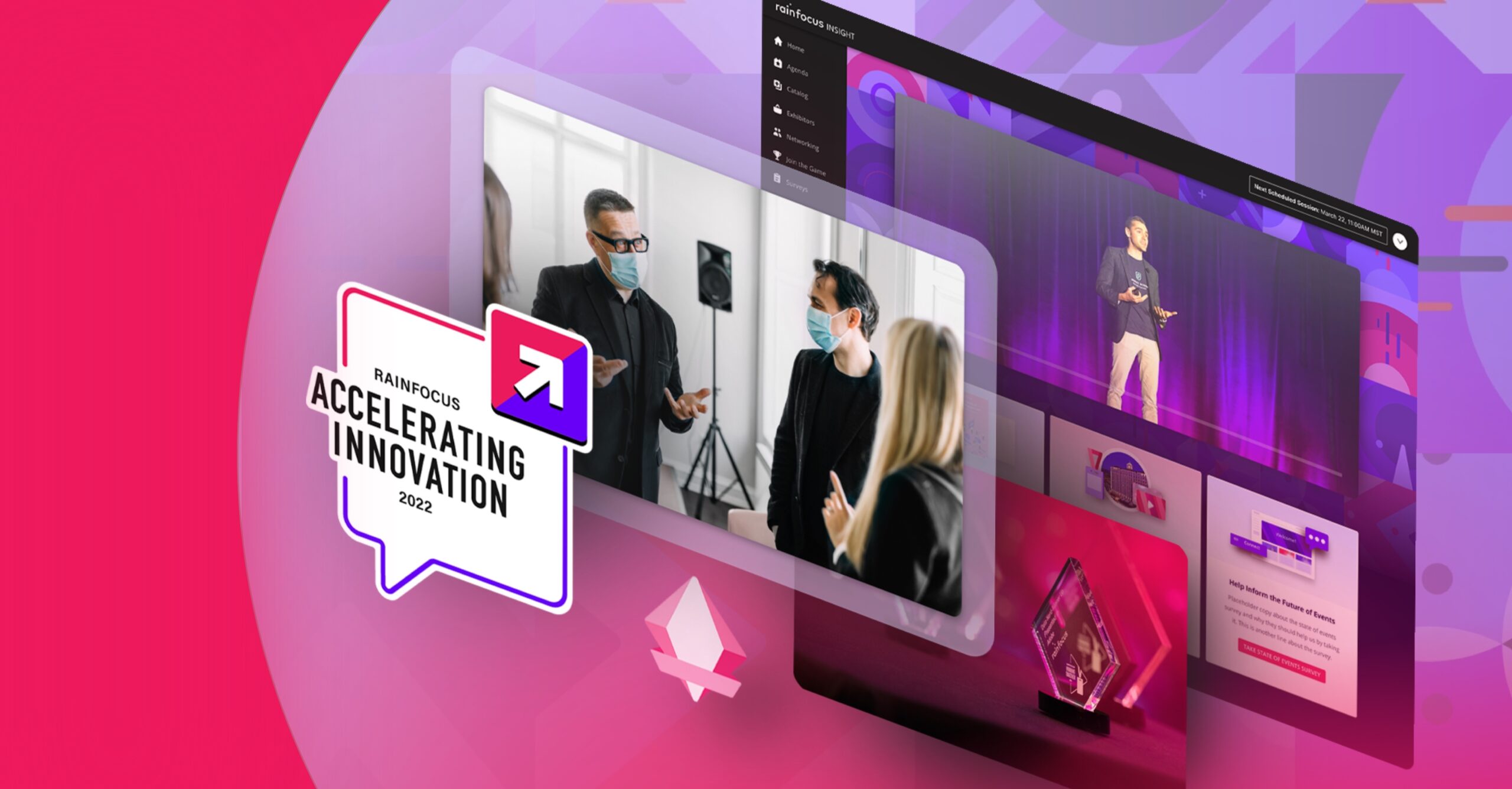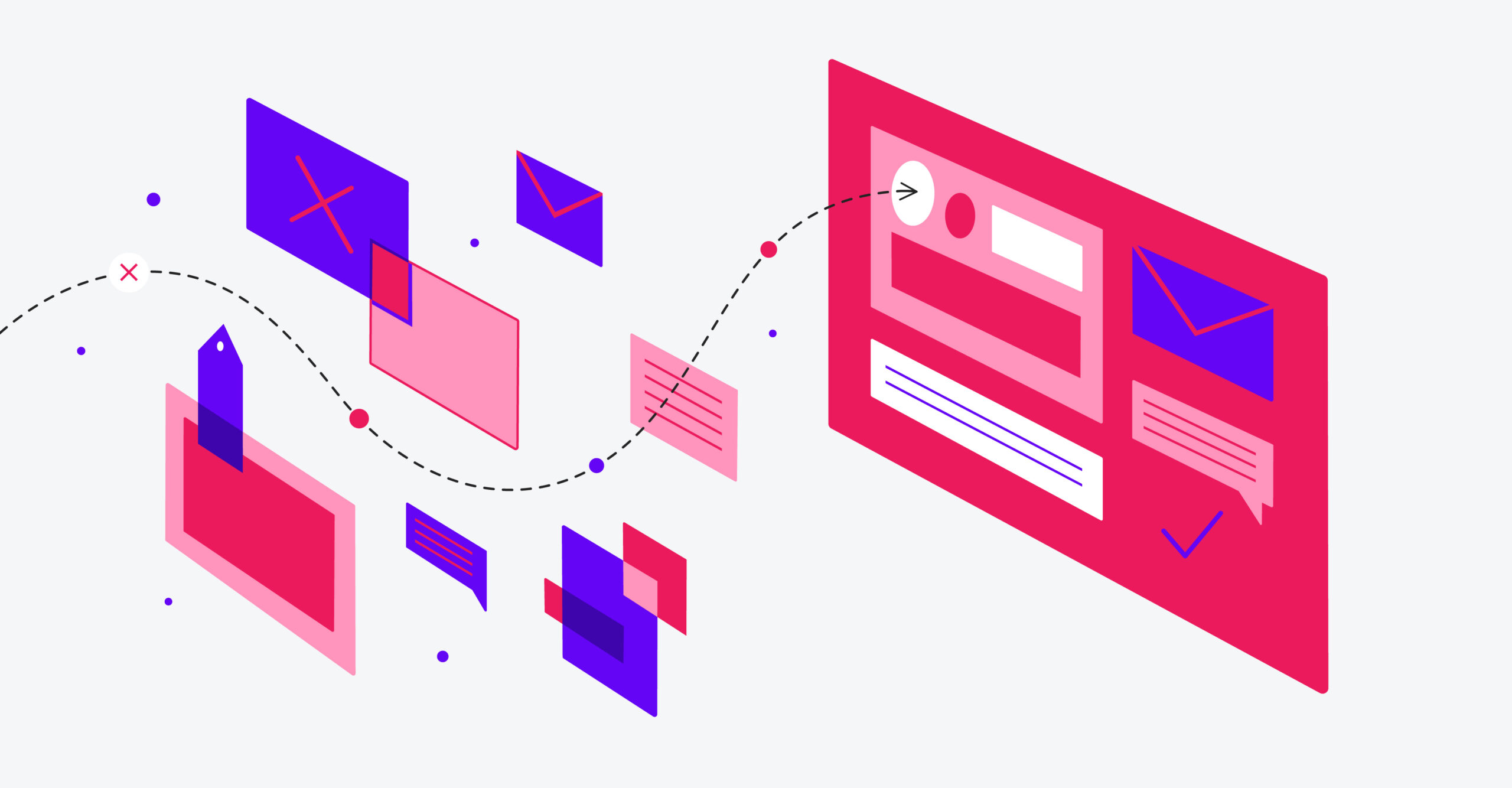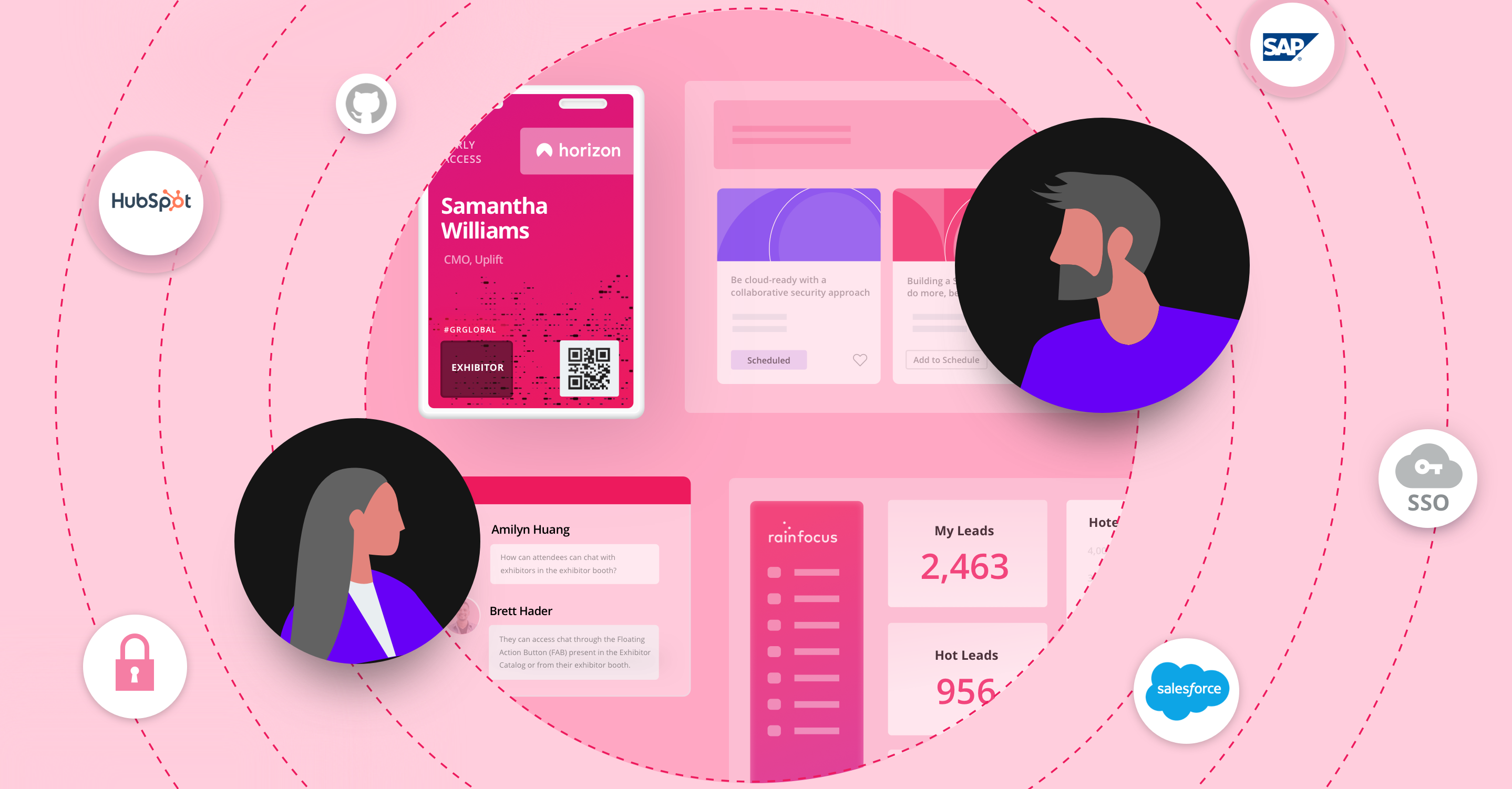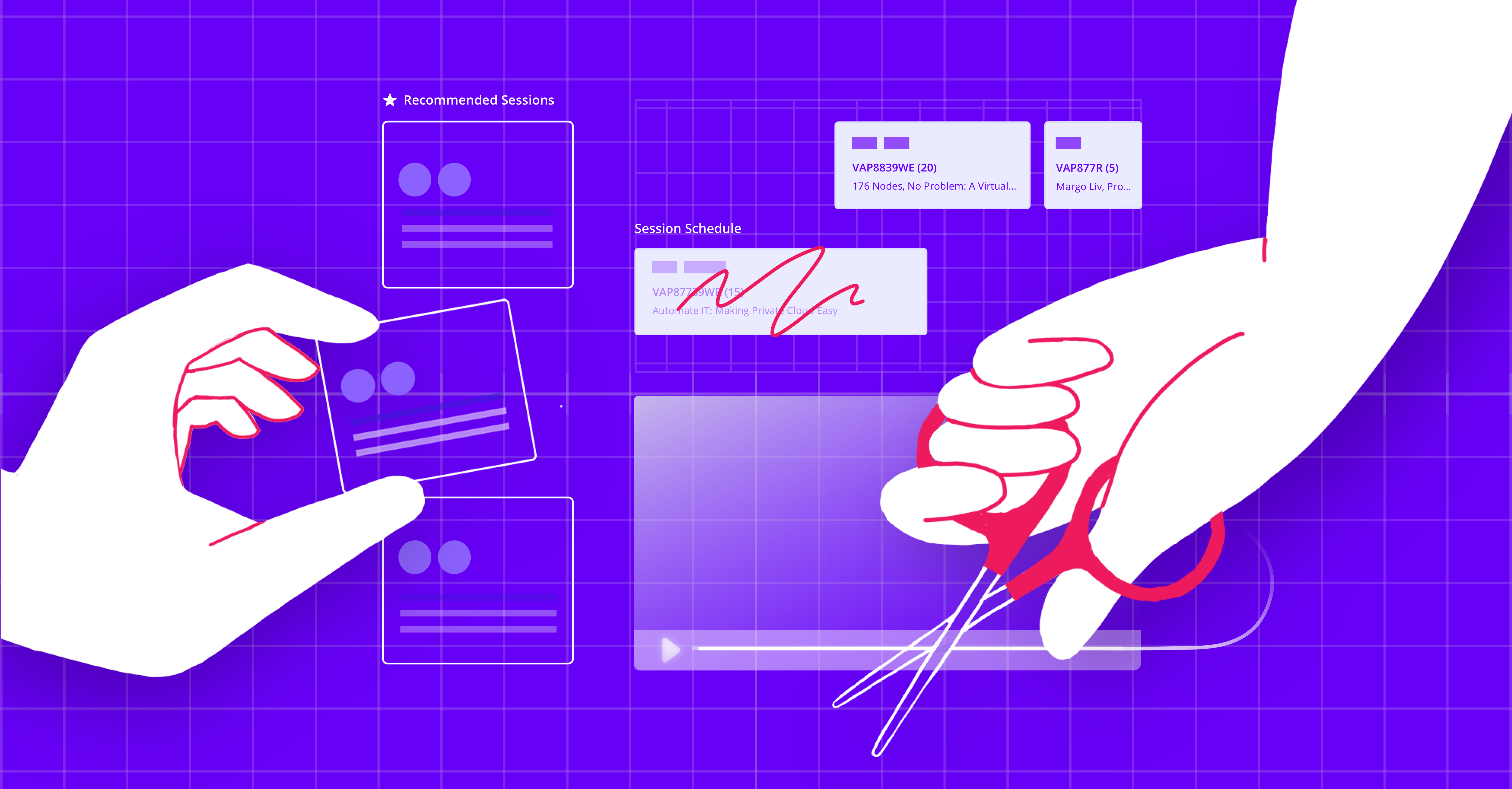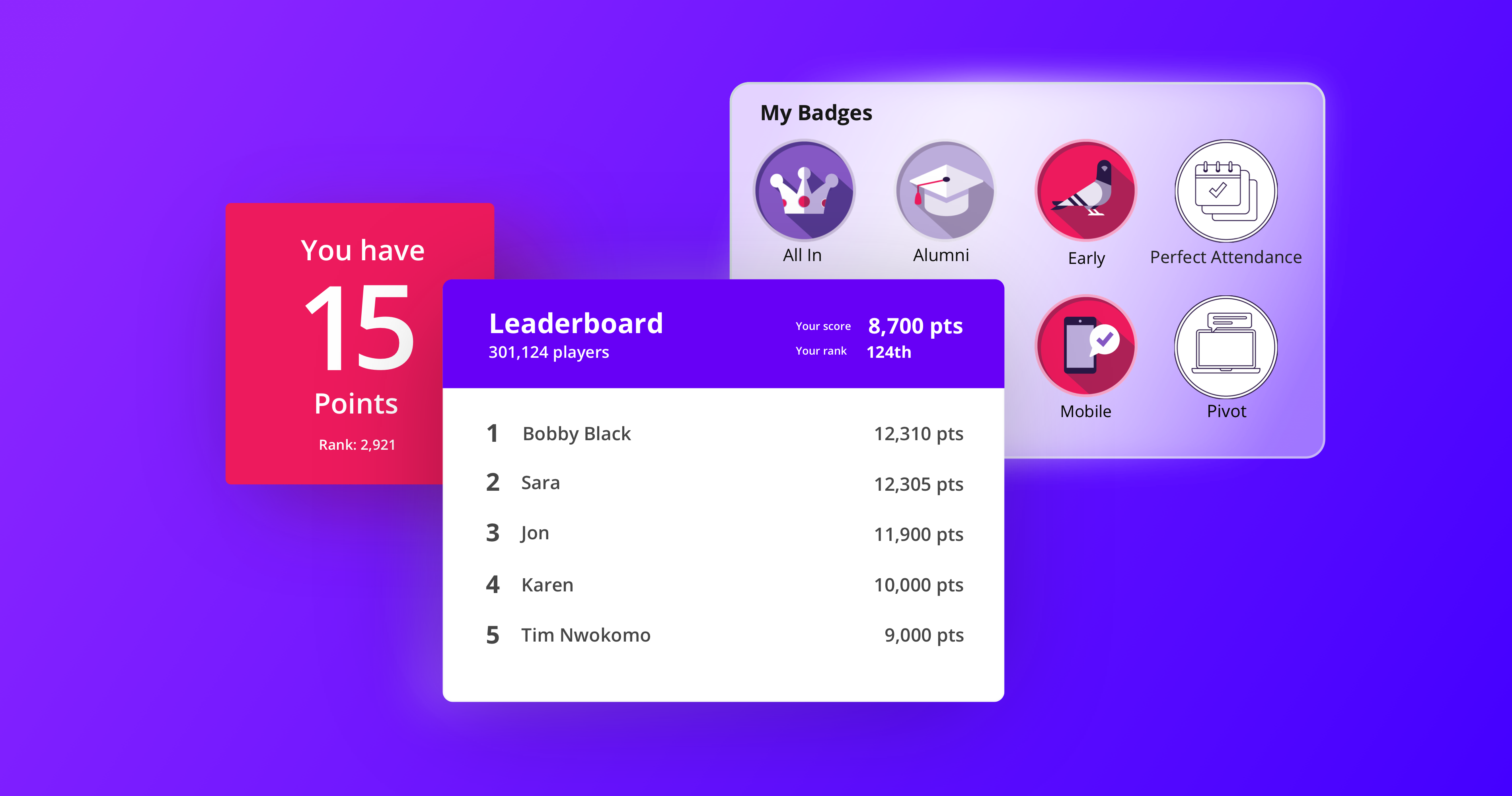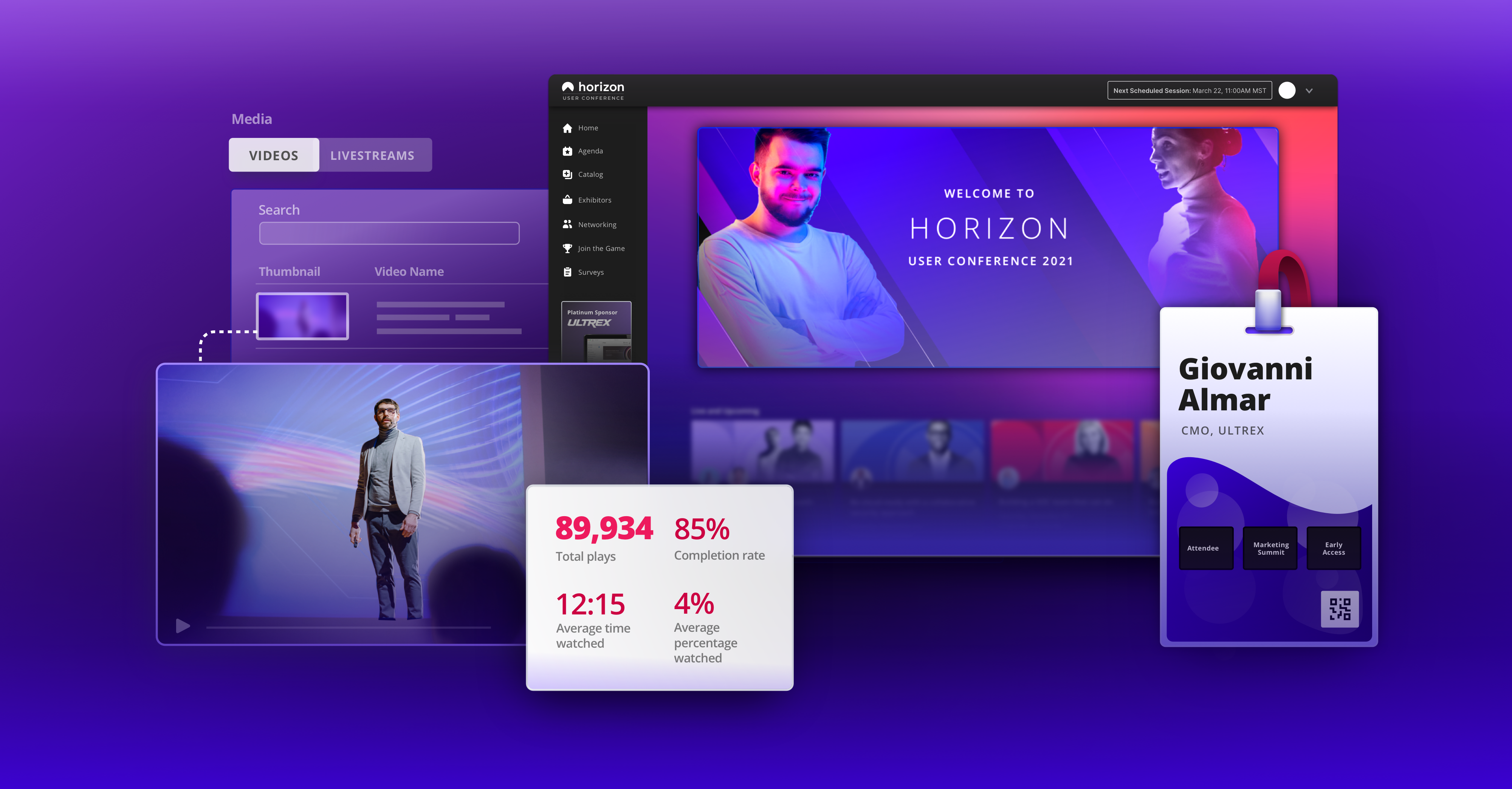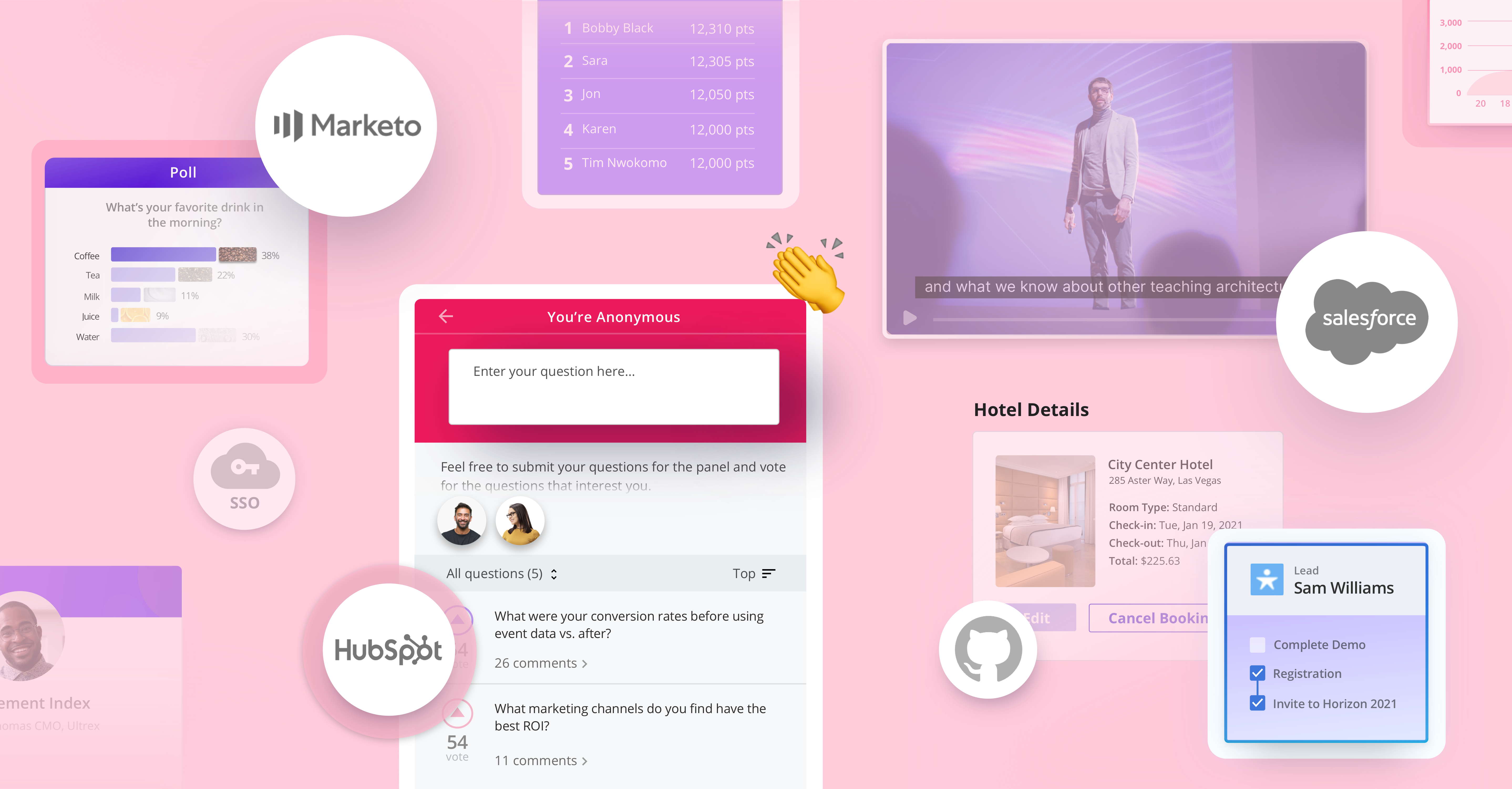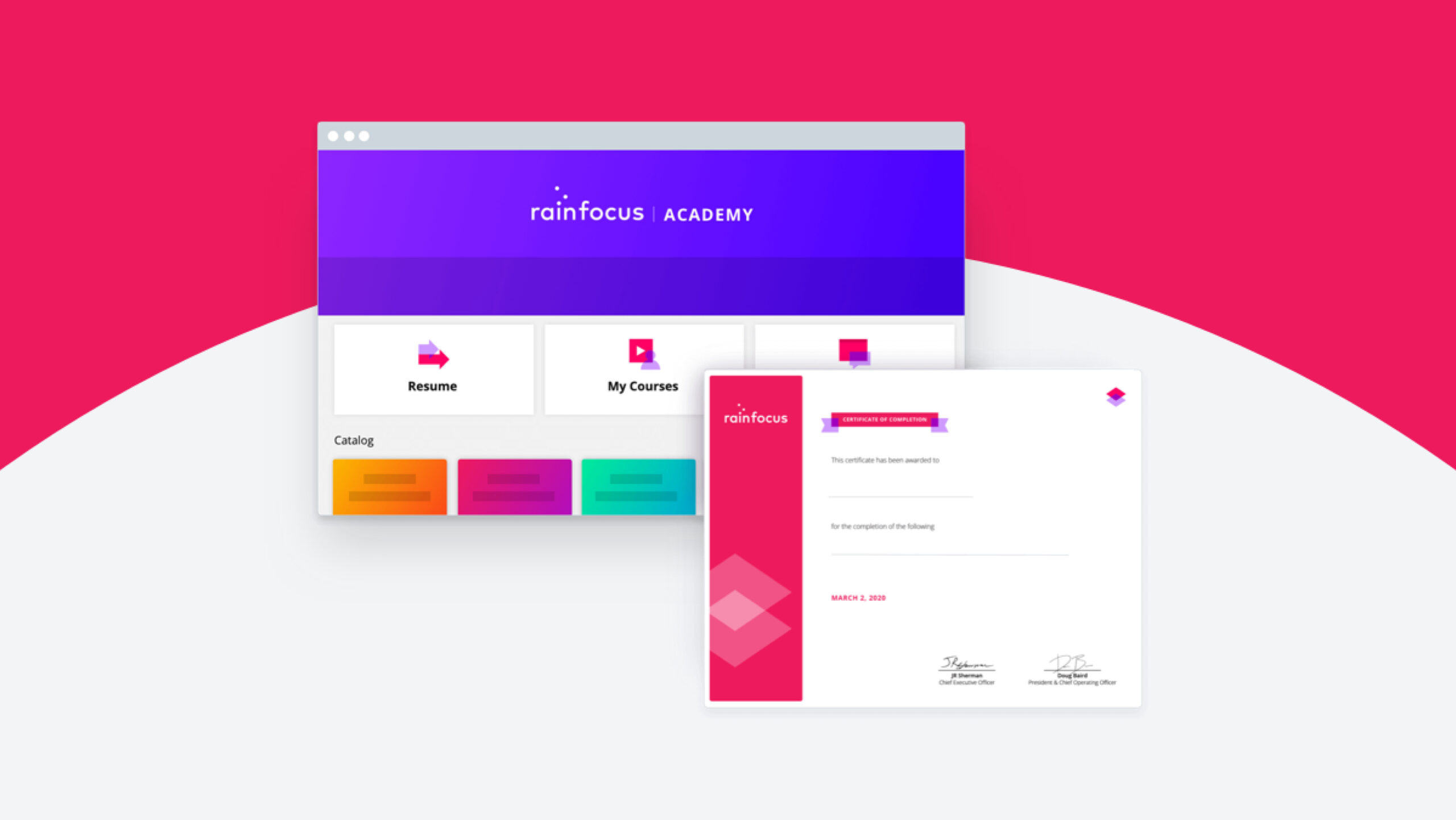In a world where buyers are bombarded with information everywhere they go, personalization is needed now more than ever before. In response to this need, many B2B marketing and sales teams are already practicing account-based marketing (ABM) in hopes of accelerating their buyers’ journeys with tailored outreach. ABM is all about a focused approach in which marketing and sales teams work together to identify and target the best-fit accounts and build lasting relationships. Events present an incredible opportunity to attract, engage and convert folks from target accounts.
Applying Account-Based Marketing Tactics to Events
The interpersonal nature of events makes them ideal for prospect conversion and customer retention. To get the most out of your events, follow the traditional ABM pattern of account identification, nurturing and engagement, and advocacy.
Account Identification
Start employing ABM tactics before your event begins by identifying your target accounts. Using RainFocus’ intelligent real-time dashboards, you can follow those accounts as they register, schedule sessions, and engage with content and exhibitors. RainFocus enables you to capture and report on account-level insights. With those insights set in place, you can quickly identify attendees from those accounts, such as decision-makers, influencers, and other essential constituents.
Nurturing & Engagement
Once you’ve determined who your key personas are, tailor your content and sessions to meet their exact needs. Start by sending out pre-event surveys to help you decide on event content and to spark attendee engagement. Before your event, utilize email, social promotion, display ads, and website content to begin nurturing your prospects. Remember, personalization tied to these accounts with account insights is key to engagement. RainFocus clients can use the virtual Event Portal to maintain attendee interaction prior to the event by introducing new content and activities as the event approaches.
When your event arrives, continue your ABM strategy by serving up personalized content through RainFocus’ dynamic Targeted Agendas. Sales and SMEs can use the Targeted Agendas for specific personas or accounts. Leverage the platform’s real-time insights to understand which stage of the sales funnel each of the prospects are in.
Advocacy
Events are the perfect venue for brand advocacy. After all, where else can you guarantee that prospects will likely run into more than one of your brand advocates? Bolster your buyer’s experience by providing them opportunities to meet with BDR’s and other key influencers. Convert your prospects into advocates by providing them with hashtags and other ways to share content from your event on social media and with peers.
Improve Event Follow-up With Account-Based Marketing
Follow-up becomes much more meaningful when you thoroughly analyze your event insights at an account level. With a clear understanding of what your attendees are most interested in, you can deploy more personalized ads targeted, emails, social posts, and emails. Once a targeted account reaches a minimum engagement score, marketers can send the Sales team all the new records from the event with a clear understanding of how that prospect is performing within the scope of the ABM event effort.
Cross-Event Data
With a single home to store data, RainFocus helps you to improve your marketing and sales by enabling you to identify patterns in behavior. From this year on, organizations have an opportunity that they’ve never had before to compare their virtual and physical events. This cross-event analysis will become each marketer’s most telling source of information as the buyer’s journey continues to get more complex. With a wealth of knowledge from physical and virtual events, teams will better understand how to convert prospects into buyers online and offline.
For more information about RainFocus data as it pertains to marketing click here.


